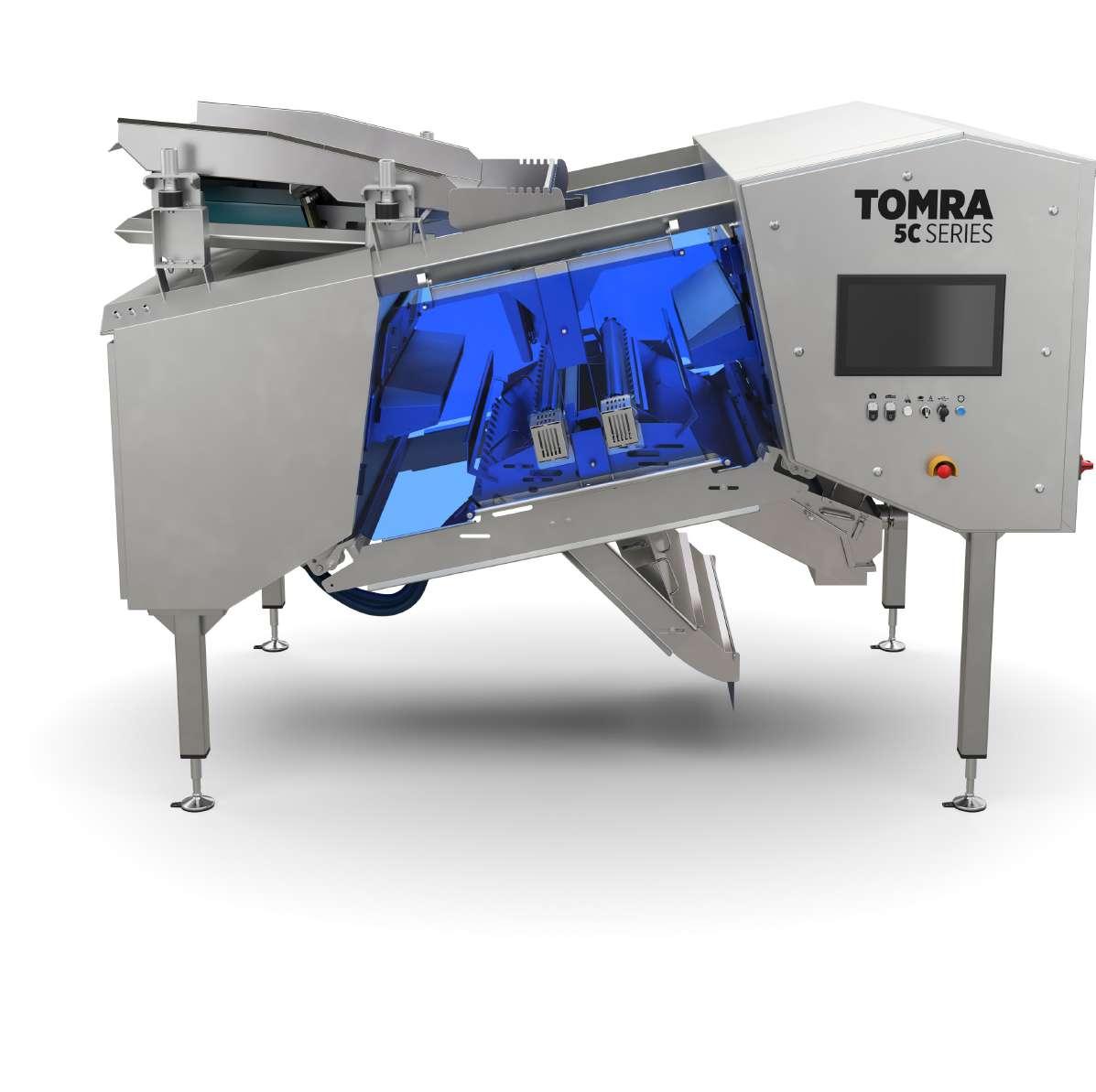DAT E S & P R O C E S S I N G
48
The Screen Classifying Cutter can be configured for gravity discharge (shown) or pneumatic pick up of size-reduced material.
SIZE REDUCTION OF DATES EIGHT-TIMES FASTER WITH SCREEN CLASSIFYING CUTTER
J
ewel Date Company grows, processes, packages and ships approximately 3.6 million kg of dates and date products a year. In addition to selling whole and diced dates, the company grinds dates into flours, granules and powders it sells as ingredients to food manufacturers, and directly to consumers through its online store. The company utilises a Munson Screen Classifying Cutter to reduce dates into granules and powders within narrow size ranges. Harvested dates are air-dried for two days to reduce moisture content from 50% to 7%, causing the dates to harden. “Anything greater than 7% and the dates will clump during processing,” explains John Ortiz, sales manager. The dates are then cooled, loaded into a hopper
FOOD BUSINESS GULF & MIDDLE EAST
and forklifted to a conveyor that transports them to the 28 cm wide throat of the cutter. The company previously utilised a hammer mill which offered less capacity and particle size control. “It took an eight-hour shift to process 907 kg of dates using the hammer mill, versus one hour to process the same volume using the SCC cutter, increasing our productivity eight-fold,” recounts Ortiz. Unlike a hammer mill in which a series of hammers strike and break the material until it passes through a bed screen, the screen classifying cutter employs solid stainless steel cutter blocks that are welded without seams in a staggered array, and have machine sharpened cutting edges that can be re-sharpened. With the variable speed motor, the plant can run the cutter at 1,500 rpm to produce particles down to 1.6 mm, or at 1,200 rpm for particles down to 4.8 mm. “We can adjust the speed to output powders or granules according to customer requirements,” says Ortiz. The cutter reportedly imparts little or no heat to the material, which is critical because frictional heat or heated equipment surfaces cause date powders and granules to melt and clump. The reduced material exiting the cutter is transferred by flexible screw conveyor to a vibratory screener that, in turn, discharges onto a belt conveyor for manual inspection and metal detection before being packaged and weighed for shipping. Ortiz says, “The Screen Classifying Cutter has not required parts or maintenance in its first four years of operation, and it has fewer moving parts than our hammer mill.” He adds, “Stainless construction with a food-grade finish allows us to clean it quickly.”
For more information, visit www.munsonmachinery.com www.shieldsdategarden.com
J A N UA R Y- M A R C H 2 0 2 1














